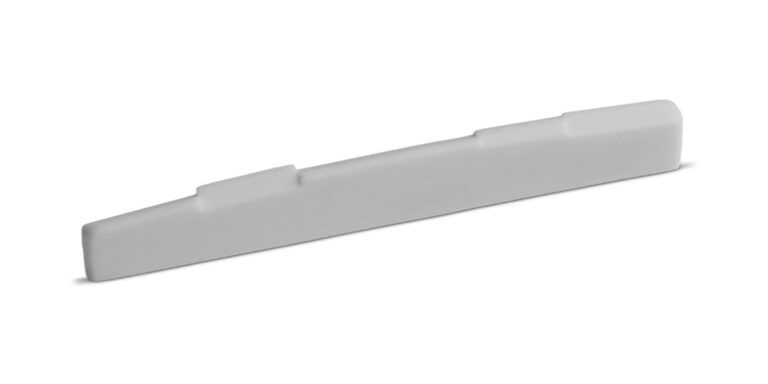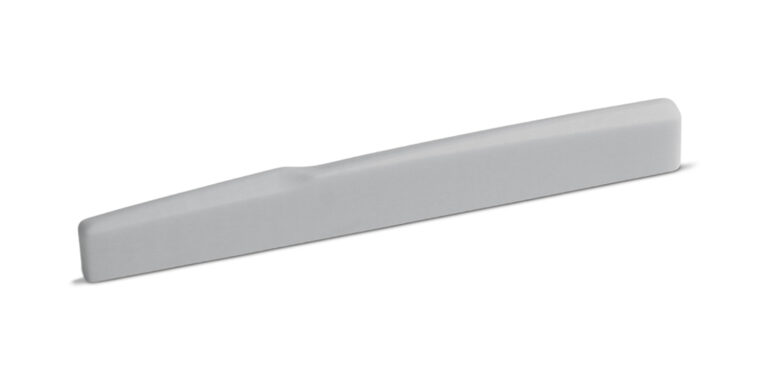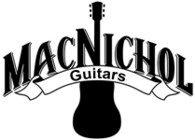Find the Correct Saddle for Your Seagull® Guitar
Looking for a Seagull guitar saddle? Seagull started constructing guitars in 1982, and there’s no single saddle that fits all guitar types. As a result, this makes finding the correct saddle for your Seagull difficult.
This article provides tips on finding the right saddle for your Seagull guitar, but you should also measure your guitar’s fretboard radius and saddle slot for a proper fit as every guitar is slightly different. Also, if you are not the original owner, at some point a different person may have installed a different neck, saddle, or have adjusted the saddle slot, producing different specs from the factory’s.
Please note that saddle specs listed within this article are either common saddle specs found on guitars, or the specs for saddles if obtained directly from Seagull. Your guitar’s saddle specs will vary. The specs listed are common starting points, but not factory set heights that require no adjustment. Each guitar will have a slightly different neck angle, and so although the factory might adjust twelfth fret action to specified heights, technicians can achieve this through a combination of adjusting the neck relief, nut slot height, or saddle height, resulting in different saddle sizes for different guitars, even from the factory.
Step One: Determine Compensation Pattern
You will see two common saddle compensation patterns often found on Seagull models: fully compensated or zig zag compensated. The two are not interchangeable and you must first determine which type is on your guitar before getting a saddle replacement. Please note that these are not the only saddle types, but are common. Let’s look at the details of the two types.
Fully Compensated, aka Step Compensated

If your Seagull was built before 2010, then your guitar likely, but not necessarily, came from the factory with a fully compensated saddle, also known as a step compensated saddle. This saddle type has clearly defined steps for the individual strings.
The below image provides a top-down view of this saddle type, shown at a three degree bridge saddle slot angle. This compensation pattern type puts the treble E, G, and D strings forward, the A string center, and the B and bass E strings compensated backward toward the bridge pins.

Seagull’s fully compensated saddle is typically around 73 mm long, 3.2 mm thick, with a maximum height that typically varies from 9 to 11 mm. However, these specs vary so please measure your current saddle. Also, Seagull has often used fully compensated saddles with a 12 inch top radius, which differs from the 16 inch fretboard radius often found on Seagull guitars. See Tusq’s Model 9280.
Zig Zag Compensated
If your Seagull was built after 2010, then your guitar likely, but not necessarily, came from the factory with a zig zag compensated saddle. This saddle type contains two backward compensation slants – one for the two plain strings, and one for the four wound strings.

Similar to the full compensated saddle, the zig zag compensated saddle is typically around 73 mm long, 3.2 mm thick, and with a maximum height that typically varies from 9 to 11 mm. As noted earlier, these specs will vary so please measure your current saddle. The zig zag compensated saddles come with a 16 inch top radius, which matches the 16 inch fretboard radius that Seagull guitars often have. See Tusq’s Saddle Model 9281 or our Bone Saddles for Seagull Guitars.
The below image provides a top-down view of the zig zag pattern, shown at a three degree bridge saddle slot angle. This compensation pattern type puts the treble E and G strings forward, the D and A strings toward the center, and the B and bass E strings compensated backward toward the bridge pins.

Other Compensation Patterns
If your Seagull does not have either of the above saddle types, it might have a non-compensated saddle – please see our Guide to Non-Compensated Saddles for more information. Another possibility is a B compensated with slanted bass saddle. Please see our Guide to B Compensated Saddles for more information.
Step Two: Measure Fretboard and Saddle Radius
Seagull guitars often come with a 16 inch fretboard, but we advise that you contact Seagull with your serial number to confirm, or print out radius gauges. You should also measure your saddle top radius. As mentioned earlier, Seagulls often come with either a 12 inch or 16 inch radius saddle, depending on compensation pattern.
If you have a fully compensated saddle with a 12 inch radius, yet your guitar has a 16 inch radius fretboard, you have two options. First, if you’re satisfied with the playability with your current saddle, then find a 12 inch radius fully compensated replacement saddle. However, generally speaking, matching your fretboard and saddle radii will result in better playability and also help to reduce string buzz. As such, if you have a 16 inch fretboard radius, but a 12 inch radius saddle, we advise that you consider getting a new saddle with a 16 inch top radius. Please see our Fully Compensated 16 Inch Radius Bone Saddle options.
If you have a zig zag compensated saddle, then your both your fretboard and saddle radii are likely 16 inches. However, please ensure this before ordering a replacement saddle.
Step Three: Measure Length and Thickness
Seagull saddles are typically around 73 mm long, with a 3.2 mm thickness. We advise that you measure your current saddle and your saddle slot as subtle differences can appear. If you’re not the original owner, then at some point someone may have adjusted the saddle slot and/or inserted a different saddle size.
Step Four: Measure Maximum Height and Bass/Treble Edge Height Difference
You will often see a taller bass side height than the treble side for increased action height for the thicker wound bass strings. This height difference will vary for each guitar, even from the factory as technicians will make saddle changes during the set up process. On Seagull acoustic guitars, you may find a 1.0 to 1.2 mm bass/treble edge height difference. Please view our article on How to Adjust Saddle Height on One Side More than the Other for more details.
Step Five: Determine Material
Seagull typically uses Tusq saddles from the factory. Tusq will produce a bright, clean sound. If you are happy with your Seagull’s tone with a Tusq saddle, then we advise that you find a Tusq replacement. If you wish to warm up the tone a bit, then consider a bone replacement. Please view our Tusq Versus Bone article for information on how these two materials compare.
Which Saddle Does Your Seagull Need?
If you still need assistance on determing which saddle size your Seagull requires, please contact us with all of the below information.
- Fretboard and Saddle Radius
- Current Saddle Length, Maximum Height, Thickness – Must be measured with a caliper
- Bass to Treble Edge Height Difference
- Bridge Saddle Slot Length, Thickness (if different from saddle specs) – Must be meausured with a caliper
- String Spacing at the Bridge
- Current Saddle Compensation Pattern (Please send a picture if you are not sure which type you have)
We will respond within 48 hours.
